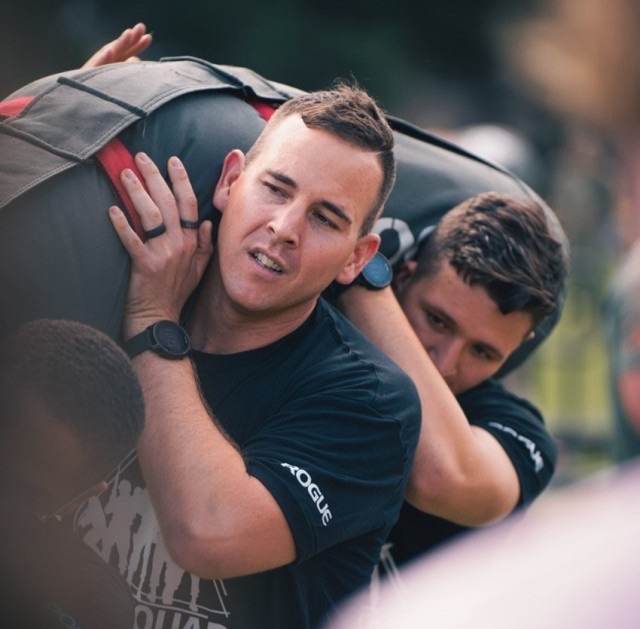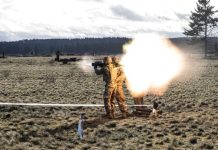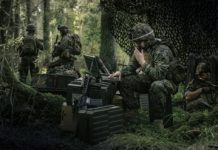
AUSTIN, Texas — In an immersive display of military innovation, the 2023 U.S. Army Best Squad Competition, held from September to October across several locations in the southern U.S., showcased the transformative power of wearable health and performance monitoring devices, positioning them as a crucial component of the Soldier’s readiness arsenal.
The competition not only underscored the capabilities of the new technologies, which included a ring device for sleep and recovery monitoring, and a sports watch for daytime exertion monitoring, but also highlighted their role as health and wellness sport technologies that can integrate seamlessly into squad proficiency tests of warrior tasks and battle drills.
Sgt. Maj. Matthew Dolsen of Headquarters, Department of the Army G-3 Special Operations Division served as lead coordinator of the competition and discussed the decision to introduce wearable technologies within military competitions.
“These competitors are our elite overachievers, mentally and physically — our future leaders. We know they have the aptitude to integrate the technology on site but will then also carry their experiences back to their units and daily missions,” Dolsen said.
Joseph Patterson, a Soldier performance strategist with U.S. Army Combat Capabilities Development Command, emphasized the significance of these wearables, which are a singular aspect of the health and human performance ecosystem. Patterson labeled the devices an “integral part” of Optimizing the Human Weapon System (OHWS), an initiative supported by Army Futures Command; U.S. Southern Command; U.S. Army Southern European Task Force, Africa; and the Office of the United States Assistant Secretary of the Army for Acquisition, Logistics and Technology Program Executive Office Soldier.
The wearable devices employed during the competition proved to be invaluable tools, sensing anticipatory stress, exertion levels and levels of recovery through each event. Providing a discrete snapshot of health data, the wearables empowered squads to enhance their performance in real time, fostering both accountability and improvement.
The incorporation of instantaneous feedback allowed for intelligent pacing adjustments in the Army Combat Fitness Test and 12-mile foot march, showcasing the Soldier’s utilization of wearable technology in optimizing outcomes and ensuring safety. Patterson compared this use case to baseball, saying, “No matter how good the bat, uniform, cleats, helmet are, it’s the player that has to be good in order to make contact with the fastball and put it in play.”
Wearables provided continuous monitoring across a myriad of physiological parameters, offering insights into warfighter responses, and contributing to formational readiness. One user voiced after the event, “I got great insight with the wearables. I felt safe to push myself hard knowing if I started to break a safe limit, I would be attended to, which is great.”
Competitors expressed the most impactful and shocking dataset to be their sleep feedback, which is measured for recovery data, and was collected over multiple days during the two-month competition. Patterson emphasized this as a notable blind spot to acknowledge.
“Sleep universally touches every service member yet seems to be the least known or understood data point in Soldiers’ lives,” he said.
Downtime was capitalized by attentive squad leaders, employing deliberate recovery when alerted by member biofeedback. Teams that showed data set indicators of faster recovery had associated positive performance during the competitive events.
“Seeing what you’re doing on a biological level lets Soldiers make better choices,” Dolsen said.
The devices are not immune to human behavior, however. Some Soldiers worried about losing the rings during the high-demand tactical events had them safely stored in their pockets, and some would forget to sync data each morning.
“It just takes some education and familiarity with the technology … I think the program is outstanding and can lead to a healthier force,” Dolsen said.
Beyond the immediate competition, the longitudinal data generated by wearable devices offers a broad application, informing both personal and command decisions and supporting the Army’s greatest asymmetric advantage: People. The adoption of wearable technology also aligns with the 2022 National Defense Strategy and Authorization Act, emphasizing the need to invest in technology for individual effectiveness and longevity. This transformative technology is designed for adaptability and has been primed to seamlessly integrate into the existing Army ecosystem of authoritative databases in the coming year, enabling even more powerful and predictive analyses in direct support of integrated prevention.
The wearables program has extended its reach across various Army units, from infantry to military intelligence, exemplifying versatility beyond the Close Combat Force. Now any Soldier can participate in the new paradigm under the ‘Bring Your Own Device’ program for wearables. All OHWS-enabled units have the option to link their own personal smart watch as part of the effort.
“OHWS recognizes the best performance wearable is one that provides the Soldier with insights into their behavior habits and choices, which may very well be the one they bought themselves,” Patterson said.
Integration of wearables accelerates transformation of human potential and survivability within the military landscape. The successful employment of wearables in the diverse and realistic environments of the Best Squad Competition illustrated their adaptability and effectiveness. By enhancing Soldiers’ physical and mental well-being, these wearables have the potential to contribute to a more resilient and effective force.
By MSG Katie Smith, Army Futures Command
You can skip to the end and leave a response. Pinging is currently not allowed.








